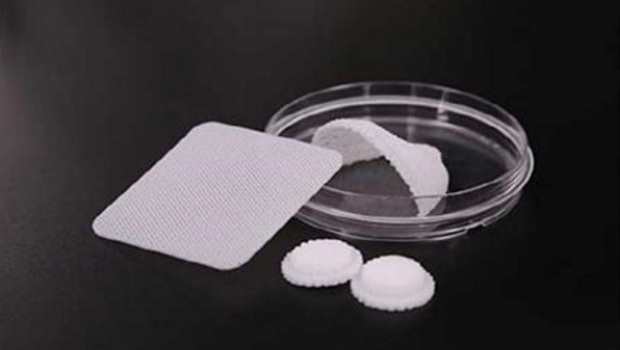3D printed material is largely being used for biomedical applications. The Question, though, is, that will the bio printed material sustain inside the human body? Will it not cause any adverse implications?
Researchers at the Korea Polytechnic University have discovered a bio printable material that can be successfully used for implants and it facilitates tissue generation, while itself being slowly dissolved in the body. This new innovation was announced by the South Korean Ministry of Science, ICT & Future Planning. The team is led by Professor Yoon Won-Soo, who is engaged in experimentations of 3D bio printing system. This year, the research team also developed a biodegradable mesh which is approved by the South Korea’s Ministry of Food & Drug Safety (MFDS). This mesh can be used for facial bone surgeries.
Currently, the implants and facial regeneration surgeries that are conducted, involve bone parts to be extracted from various parts of the body. The bone implants are extracted from the body, developed into the desired facial structures and used for implantation. 3D printing, however, does not require any bone extraction and can be used to construct biodegradable materials that can be easily implanted and facilitate tissue regeneration inside the body. This is the first 3D biomaterial in South Korea. It reduces operation time to 2 hours from the previous 8 hours. This discovery will greatly benefit the bone reconstruction system.
The biodegradable material is FDA approved and is a medical polymer made from polycaprolactone (PCL). This material slowly dissolves in the human body, while boosting the growth of new tissues. This also reduces the potential side effects of the implant surgery which the patients have to face in the long term.
This PCL material is being developed by the Korea Polytechnic University with the Pohang University of Science & Technology (POSTECH) and the Seoul St. Mary’s Hospital. The PCL material will be further used for combining with the 3D printable tricalcium phosphate (TCP), a substance which facilitates bone regeneration, to construct bone implants. The research team has applied for MFDS approval.
Source: 3ders.org
